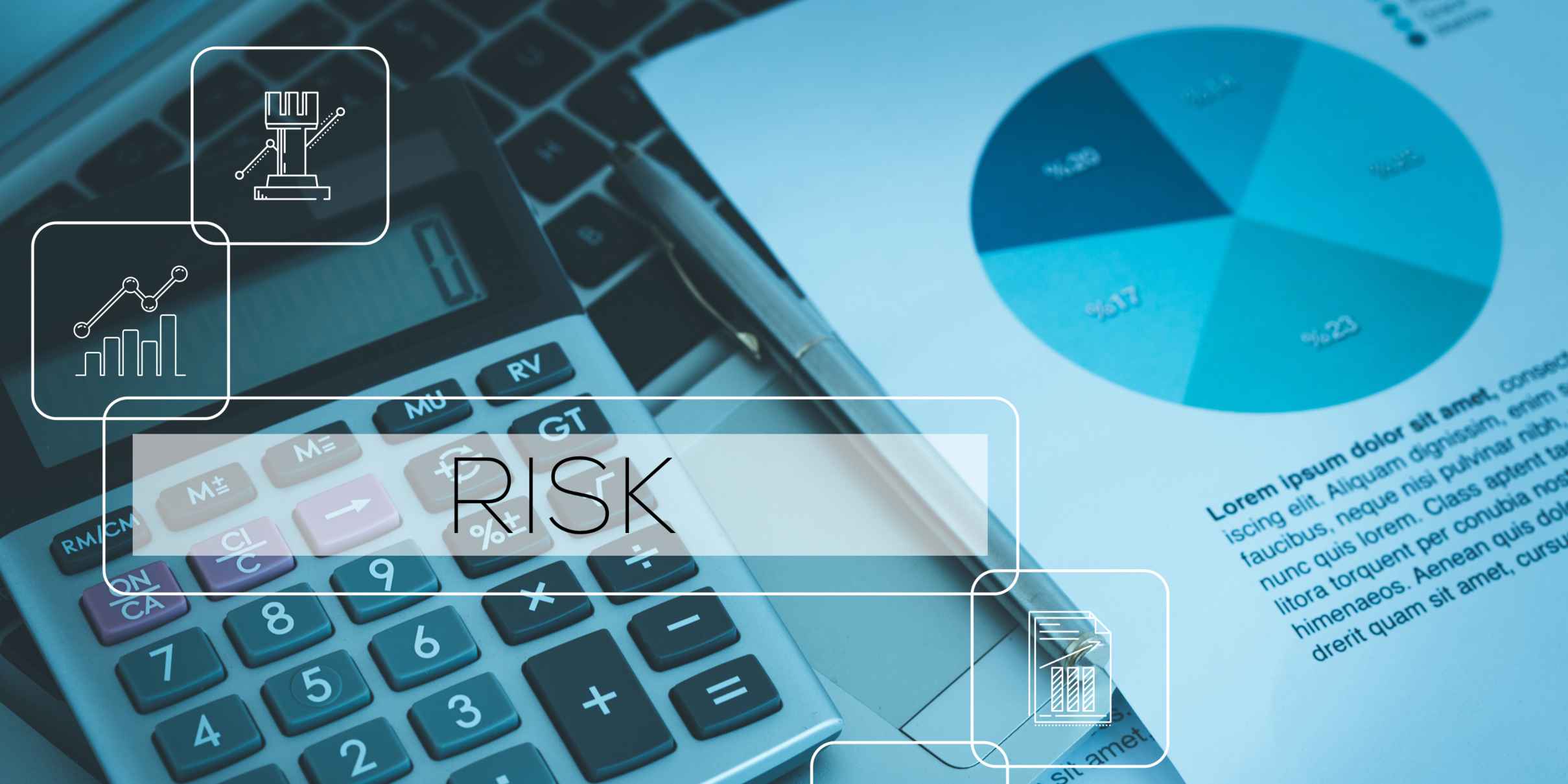Calculating risk probability and impact is fundamental to effective risk management. This process involves assessing both how likely a risk event is to occur (probability) and the potential consequences if it does (impact). By multiplying these two factors together, you obtain a risk score that helps prioritize risks and allocate resources efficiently. The most effective approach combines structured risk classification, consistent measurement scales, and regular reassessment as conditions change. This systematic method transforms risk management from a reactive exercise into a strategic decision-making tool.
Understanding risk probability and impact calculations
Risk probability and impact calculations form the foundation of structured risk management. These two components work together to help organizations quantify potential threats and opportunities, enabling informed decision-making based on data rather than intuition.
At its core, this calculation involves assessing two key dimensions: the
of consequences if it does. When combined, these measurements create a risk score that allows teams to prioritize their response efforts and allocate resources appropriately.
Effective risk calculations require consistent methodologies across your organization. This ensures everyone speaks the same language when discussing risks and prevents the common problem of different departments using incompatible assessment approaches. The resulting clarity helps leadership make better strategic decisions while satisfying regulatory requirements for risk oversight.
What is risk probability and how is it measured?
Risk probability represents the likelihood that a specific risk event will occur within a defined timeframe. It answers the question: "How likely is this risk to materialize?"
Several approaches exist for measuring probability, each with specific advantages depending on your context:
- Numerical scales (typically 1-5): Where 1 might represent "rare" (less than 10% chance) and 5 represents "almost certain" (greater than 90% chance)
- Percentage ranges: Direct probability estimates such as 0-20%, 21-40%, etc.
- Frequency-based assessments: How often the event might occur (daily, monthly, annually)
- Qualitative descriptors: Using terms like "unlikely," "possible," or "likely" with defined meanings
The most effective probability assessments combine historical data, expert judgment, and contextual factors. For example, when evaluating cybersecurity risks, you would consider past breach statistics, current threat intelligence, and your specific security controls.
For consistency, document clear definitions for each probability level in your risk management policy. This prevents subjective interpretations and ensures comparable evaluations across different teams and risk categories.
How do you determine risk impact effectively?
- Financial impact: Direct costs, revenue loss, recovery expenses
- Operational impact: Disruption to business processes, productivity losses
- Reputational impact: Damage to brand, customer trust, or market perception
- Regulatory impact: Compliance violations, fines, increased scrutiny
- Strategic impact: Effect on achieving organizational objectives
Like probability, impact is typically measured using standardized scales (1-5 or similar), where definitions clearly outline what constitutes minor, moderate, or severe impact in each dimension. For example, a "severe" financial impact might be defined as "losses exceeding €500,000 or 5% of annual revenue."
The most effective approach is to define impact criteria specifically for your organization's context and risk appetite. This customization ensures relevance to your strategic objectives and operational environment.
What's the difference between qualitative and quantitative risk assessment?
Qualitative and quantitative risk assessments represent two fundamental approaches to evaluating risks, each with distinct characteristics and applications.
Qualitative risk assessment uses descriptive scales and expert judgment to evaluate probability and impact. This approach:
- Relies on scales (typically 1-5) with descriptive criteria
- Leverages expert opinion and experience
- Is relatively quick and straightforward to implement
- Works well when historical data is limited
- Provides sufficient detail for many operational decisions
Quantitative risk assessment uses numerical values and statistical methods to calculate probability and impact. This approach:
- Expresses probability as percentages or frequencies
- Measures impact in specific monetary values
- May employ techniques like Monte Carlo simulation
- Requires more data and analytical expertise
- Provides more precise results for complex decision-making
In practice, many organizations use a hybrid approach, applying qualitative methods for initial assessment and then conducting quantitative analysis for high-priority risks that warrant deeper investigation. The right choice depends on your available data, analytical capabilities, and decision-making requirements.
How do you create and use a risk matrix?
A risk matrix is a visual tool that combines probability and impact ratings to display risks graphically and support prioritization decisions. Creating an effective risk matrix involves several key steps.
First, define your probability and impact scales clearly, typically using 3-5 levels for each dimension. Then, create a grid where probability appears on one axis (usually vertical) and impact on the other (usually horizontal). The resulting cells represent different risk levels, commonly color-coded as follows:
- Green: Low-level risks that may require monitoring but minimal action
- Yellow: Medium-level risks requiring attention and management plans
- Red: High-level risks demanding immediate action and senior oversight
To use the matrix effectively, plot each identified risk according to its probability and impact ratings. This visual representation immediately highlights which risks fall into the high-priority zone, allowing you to focus resources where they matter most.
The risk matrix should be a dynamic tool, updated as new information emerges or as mitigation actions change the risk profile. Regular reviews ensure the matrix continues to reflect your current risk landscape and supports informed decision-making.
What common mistakes should you avoid when calculating risk?
Effective risk calculation requires avoiding several common pitfalls that can undermine the accuracy and usefulness of your assessments.
One of the most frequent mistakes is subjective bias in probability and impact ratings. Without clear criteria, assessors tend to rely on personal perceptions, leading to inconsistent evaluations across the organization. Establish detailed scoring guidelines and consider using multiple assessors to counteract this bias.
Another common error is using inconsistent scales across different departments or risk categories. This makes it impossible to compare risks meaningfully or aggregate them for organizational reporting. Standardize your assessment methodology throughout the organization to create a unified risk language.
Many organizations also fail to account for risk interdependencies, assessing each risk in isolation. In reality, risks often have cascading effects or share common triggers. Map these relationships to understand how risks might compound or trigger one another.
Perhaps most critically, treating risk assessment as a one-time exercise rather than an ongoing process leads to outdated risk profiles. Risk factors change constantly, requiring regular reassessment. Implement a structured review cycle and mechanisms to trigger reassessments when significant changes occur.
How can you standardize risk calculations across your organization?
Standardizing risk calculations throughout your organization ensures consistent, comparable assessments that support reliable decision-making at all levels.
Start by developing a centralized risk framework that defines common terminology, assessment scales, and methodology. This foundation document should specify exactly how probability and impact are measured, including detailed criteria for each rating level across different impact dimensions.
Provide comprehensive training to ensure all stakeholders understand the methodology and can apply it consistently. This training should include practical exercises using relevant scenarios to build assessment skills.
Implement technology solutions that enforce standardized calculations and provide a single source of truth for risk data. Modern GRC platforms can embed your risk methodology directly into workflows, ensuring consistent application while simplifying the assessment process.
Establish a governance structure with clear roles and responsibilities for risk assessment, including quality control mechanisms to verify consistency. Regular calibration sessions where teams compare and discuss sample assessments can help identify and address inconsistencies in approach.
Key takeaways for effective risk probability and impact assessment
Effective risk calculation transforms uncertainty into manageable insights that drive better decision-making. By implementing structured approaches to probability and impact assessment, organizations gain clarity on their risk landscape and confidence in their prioritization decisions.
Remember these key principles:
- Define clear, consistent scales for both probability and impact
- Consider multiple impact dimensions beyond just financial consequences
- Combine qualitative and quantitative methods where appropriate
- Visualize risks using matrices to support prioritization
- Regularly reassess as conditions and information change
- Document your methodology to ensure consistency across teams
The most sophisticated organizations are now moving beyond static assessments to implement dynamic risk scoring that reflects changing conditions in real time. By centralizing risk data and automating calculations, you can transform risk management from a periodic compliance exercise into a continuous strategic capability.
At Cerrix, we understand that effective risk management starts with consistent, well-structured risk calculations. Our product enables organizations to implement standardized risk methodologies, visualize risk profiles through interactive dashboards, and track how risks evolve over time creating a foundation for more confident, data-driven decision-making. To see how our solution can transform your risk management approach, request a demo today.
Spreadsheets vs. GRC Tools: Elevating Risk & Compliance Management
Accessible popup
Welcome to Finsweet's accessible modal component for Webflow Libraries. This modal uses custom code to open and close. It is accessible through custom attributes and custom JavaScript added in the embed block of the component. If you're interested in how this is built, check out the Attributes documentation page for this modal component.


.jpg)
%20(1).jpg)
.jpg)
.jpg)
.jpg)
.jpg)
%20(1).jpg)
.jpg)
%20(1).jpg)
.jpg)
.jpg)

.jpg)
.jpg)





.jpg)

%20(2).jpg)















%20(1)%20(2).jpg)





.jpg)

.png)
.jpg)






%20(1).avif)



